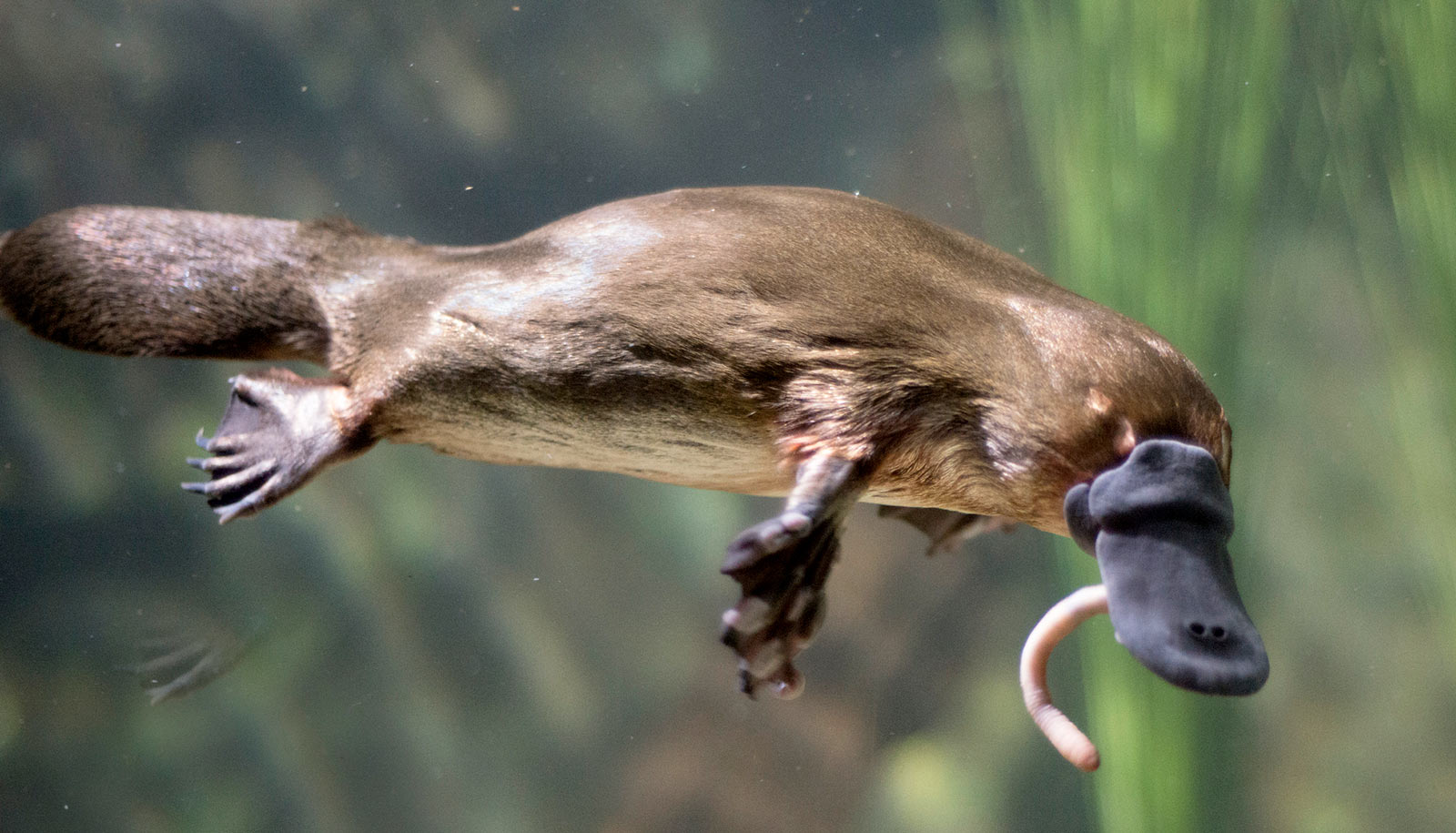
Males are about one-third (1/3) larger than females. Its tail can be from 10 cm (4 in) to 15 cm (6 in) long. Its body can be from 30 cm (12 in) to 40 cm (16 in) long. Adults can be less than 1 kg (2 lb) or up to 3 kg (7 lb). The larger platypus live in Tasmania while the smaller ones live in Queensland. The platypus is sometimes called "duck billed platypus" because of this nose. When the platypus moves on land, it walks on its knuckles so the webs on its feet will not get in the way. Unlike a beaver, it has no feet (no toes), which are good for swimming. The platypus looks similar to a beaver with a brown, furry body and wide, flat tail. The more 'advanced' (' derived') mammals have the system where the rear has two openings. This is a primitive (' basal') feature of tetrapods, which monotremes, birds and reptiles have today. Through this opening faeces and urine are voided (put out), and sexual activity takes place. These mammals are called monotremes because they have a common rear opening known as the cloaca. The platypus was first described in detail in the early 19th century, but it took a while before biologists in England believed what they were reading. The other is the Echidna, which has four species. It is one of only two families of mammals which lay eggs.


The platypus lives in rivers and river banks.

The plural of platypus is just 'platypus'. It is one of only two monotremes to survive today. The duck-billed platypus ( Ornithorhynchus anatinus) is a small mammal. Lua error in a at line 80: module 'Module:Taxonbar/exists' not found. Platypus range (red – native, yellow – introduced)


 0 kommentar(er)
0 kommentar(er)
